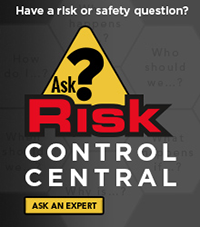Providing safe harbor
Helpful tips for sanctuary congregations
Over the past few years, immigration in the U.S. has become a hot-button topic. Church Mutual Insurance Company understands that for many communities, this has also become a social justice issue. It’s a very complex issue with legal ramifications on multiple fronts.
Houses of worship around the country, and some Church Mutual policyholders, have chosen to take part in the sanctuary movement by providing safe harbor, or shelter, to undocumented immigrants at risk of apprehension by immigration authorities.
The sanctuary movement is an ever-changing issue that will likely continue to evolve on federal, state and local levels. Policyholders wishing to engage in safe harbor-related activities must recognize and understand the risks involved.
Is it legal for faith groups to provide sanctuary?
If a congregation has decided to become a safe harbor, it’s important to have all the latest legal information. The potential repercussions are serious — those involved in knowingly harboring an undocumented immigrant may be at risk of facing federal criminal prosecution.
There is some confusion and discourse between what is allowed between federal, state and local laws. If your faith group is considering providing sanctuary to undocumented immigrants, please be sure to check with your local legal counsel for concrete advice specific to your area.
For preliminary answers to common questions regarding the legality of sanctuary-related activities, you can search and read Sanctuary Congregations and Harboring FAQ from the American Civil Liberties Union (ACLU).
What other risks are involved?
Generally, houses of worship are not equipped to be used as long-term shelters or housing facilities. Regardless of immigration status, housing people in your facility does come with additional risks and liabilities.
An influx of people within your house of worship can increase incidents of:
-
Slips, trips and falls.
-
Possible illness or food poisoning.
-
Additional safety and security exposures for church employees, members, church groups, guests and temporary residents.
There are also costs and risks involved in providing living accommodations in a building not equipped for such arrangements. Do you have the capacity to absorb these? Is your building up to the task? Is there a staff member or community member willing to be a coordinator or point person for the temporary housing?
Tips if you are considering offering sanctuary
After you discuss the legality of your plans regarding safe harbor, here are a few actions and policy suggestions:
-
Ask local municipal authorities about any restrictions preventing the worship center from providing living accommodations to people on a long-term basis.
-
Ask the local fire department to conduct a survey of the living area to determine if it is code compliant.
-
Are appropriate emergency exits provided and marked?
-
Are smoke and carbon monoxide alarms installed and working?
-
Are approved fire extinguishers readily available and fully charged?
-
Do fire alarms and sprinkler systems (if equipped) function properly?
-
-
Review your property for hazards and make corrections to improve safety. Utilize our Self-Inspection Safety Checklist to help identify risks.
-
Establish and post rules for temporary residents to follow such as:
-
Smoking, if permitted, should only be allowed in a designated exterior area, and no smoking allowed within buildings.
-
Medications must be kept in a secured area at all times.
-
No weapons (including guns, stun guns or knives) should be allowed on property.
-
-
Individuals should be over 18 years of age or accompanied by a parent or legal guardian.
-
No illegal drugs or alcohol should be used while staying at the facility.
-
Restrict access to designated areas of the worship center where money and valuables are kept.
-
An individual should be capable of performing all activities of daily living such as feeding themselves, bathing, dressing, grooming, etc.
Here are a few other questions to address within your leadership team:
-
How will you ensure sanctuary seekers are clear of any sex-related charges or convictions, felonies, and have no outstanding arrest warrants?
-
How will the existing child and youth areas of your organization be separated from sanctuary/living areas?
-
Are there agreements in place to limit the worship center’s responsibility for personal injuries to residents while staying at the property?
What are the next steps?
We understand that this is a very complex topic that has many social implications for policyholders. We also know that many decisions for local communities make sense in some regions of the country, but might not fit for others.
If you decide to move forward to offer safe harbor:
-
Thoroughly discuss all potential legal considerations and consequences with local legal counsel.
-
Evaluate your facility to make sure it is a safe place to live, even if only temporarily.
-
Request assistance/verification regarding code compliance from local municipal authorities.
If you then proceed, please take the time to create thoughtful policies and procedures for your sanctuary-related activities.
Contact Church Mutual’s Risk Control Center with any questions or to discuss this further.







